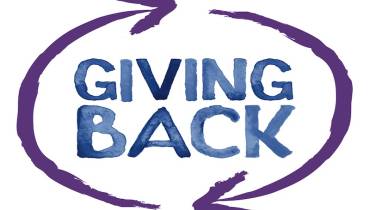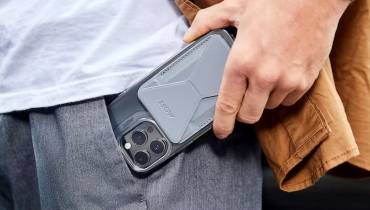Best Tips to Prevent & Treat Summer Sunburn

Summer is the season when most people simply want to play or lay around enjoying and basking in the warmth of thesun, at least for a few hours.
However, these few hours of fun under the sun can make your worst summer nightmare a reality – at the end of the day, you can end up looking like a lobster – red and inflamed – from sunburn due to long exposure to the sun.
It happens to the best of us sometimes - you forget to apply sunscreen everywhere, or you simply forget to add another layer and end up getting sunburn.
In this article, we provide useful information you can use to treat existing sunburns yourself so that you prevent further (and future) damage to the skin.
Let’s dive in…
Prevent, relieve, and soothe sunburn yourself
Here’re are some key recommendations to prevent, relieve, and soothe sunburn yourself as soon as possible, and take care of your skin so that you always look and feel great.
1. Don’t stay under the sun too long
Too much time in the hot sun can lead to a number of health conditions, including sunburn, dehydration, heat exhaustion, hyponatremia, and heatstroke.
The moment you realize you have any of the symptoms of sunburn like red skin, itchiness, painful skin, dizziness, general weakness, or you simply feel tired – get out from under the sun immediately. Go to a shade, but it is best to go inside and stay there.
2. Take a cool shower
Treatment for an overheated body and skin is sometimes as simple as taking a shower to cool down. Get into the shower as soon as you can and let the cool water gradually cool down your body temperature. This will almost immediately soothe red and irritated skin.
Although the redness on the skin might show even more after taking a shower and cooling your body down, then is when you will know the extent of the damage done to your skin. Don’t scrub the water, pat it gently after you finish showering.
3. Drink plenty of water
Drink plenty of water to rehydrate, and stay indoors for the remainder of the day until evening. Staying hydrated is especially important during the hot summer months.
Studies on the effects of increased daily water intake show that there are many benefits of drinking plenty of water every day, including lowering high blood pressure, supporting healthy kidney function, and maintaining necessary body hydration.
Besides adhering to the general advice to drink at least eight glasses of water a day for adults, also keep water close to you at all times during summer months so that you don’t go thirsty.
4. Use moisturizing lotion
After drinking water and taking a cool shower, you can use a moisturizing lotion to lock in water to the body. However, don’t use moisturizers that contain potential irritants, like perfume, benzocaine, lidocaine, or petroleum jelly that retains heat.
For sensitive skin, it is advisable and best to use a medically approved moisturizer. You can also cover your skin in aloe vera gel, as it also provides a protective, moisturizing layer for irritated skin. If you happen to get blisters, aloe vera will also help your body recover faster.
5. Apply hydrocortisone creams for itchy skin
If you are experiencing symptoms like swelling, itchiness, tension, or any other irritation, you can use hydrocortisone cream to help you relieve the discomfort.
Follow the manufacturers’ instructions to apply and re-apply the ointment. If you have the irritation on a smaller area, you can to apply the cream wider as it will work faster.
A thin layer of 1% hydrocortisone cream is usually enough to do the work.
6. Take OTC medications for pain and sleep
If you experience pain or other irritation from sunburn, you can take over-the-counter (OTC) meds like ibuprofen or acetaminophen to help you feel better and fall asleep.
Go inside, lay down, and get some sleep. Sleep will help you the most to recuperate and avoid further irritation. You should feel relief after 20-30 minutes.
7. Visit the doctor
Even though sunburns are common and many of us experience them once in a while, they may require medical attention. Visit a qualified medical practitioner if you think you need further help.
A seasoned dermatologist will help you treat any minor symptoms like irritation, but also greater skin damage like blisters over a large area, fever, and subsequent changes to skin or moles on it.
Do not ignore going to the doctor particularly if you feel substantially weak the next day.
Tips for Preventing sunburns
The first line of defense in sunburn prevention is to have healthy nutrition – lots of fibres, vitamins, and plenty of water intake that corresponds to your body weight and daily activities.
Besides that, there are other additional steps in sunburn prevention that you should do and follow, especially if you have sensitive and very pale skin.
I. Stay under a shade
Stay under a shade when outside on hot days to avoid direct sun. Direct sun exposure can result in severe skin damage, if you don’t take additional preventive steps.
The strongest sun rays hit from around 10 AM to 4 PM. That’s when the most damage to skin can be done. A shade is your best friend outdoors, and you will still get a nice tan if that is your goal.
II. Always apply sunscreen when going out in the sun
Every dermatologist will tell you the same thing – do not go out in the sun without sunscreen! Check the SPF of the sunscreen product you use to compare the level of sunburn protection provided by different sunscreens and to determine the best sunscreen product for your skin.
According to the U.S Food & Drug Administration (FDA), “SPF is a measure of how much solar energy (UV radiation) is required to produce sunburn on protected skin (i.e., in the presence of sunscreen) relative to the amount of solar energy required to produce sunburn on unprotected skin.”
As the SPF value increases, sunburn protection increases. So, for example, SPF 30 sunscreens will& provide more sunburn protection than SPF 8 sunscreens. Generally, the best SPF factor for most people is SPF 30 and SPF 50, as these protect from 95% or more UV rays.
Sunscreen should also be used inside on very hot days, especially if you are spending time near a window as UV rays will pass through the glass. You probably will not get sunburn from UV rays passing through the window, but the UV rays can erode your skin’s natural protection over time, so take this into account when deciding against sunscreen application indoors.
The sunscreen cream or lotion you use should be reapplied throughout the day, per the manufactures’ instructions. Usually, it should be reapplied every couple of hours, especially if you are outside for long and have sensitive and pale. Also consider buying and applying a sunscreen product that is in spray or mineral form to protect the skin under your hair.
III. Wear protective clothing
For those hot, relaxing days in the sun on the beach or elsewhere, wear protective hats and sunglasses throughout to protect you face from harsh UV rays.
Also, cover yourself as much as you can in natural textile to protect the skin on the rest of your body. Loose fit and long sleeves clothing items made from natural material like cotton, silk, flax, kemp, and linen are your best friend for those hot summer days.
Nowadays you can even find summer clothing items made from fabric that has UV protection. You can also find innovative UV-blocking treatments that you can add to your laundry.
Ultimately, sunburn can be treated at home, and more importantly avoided altogether!






















